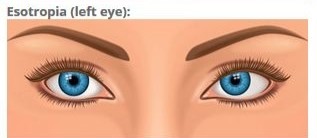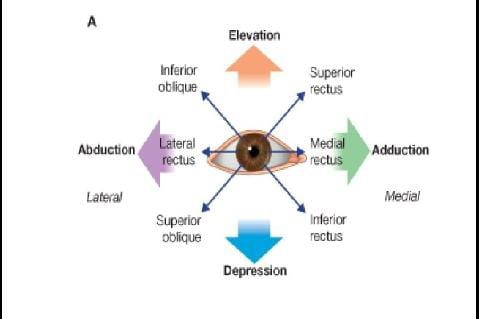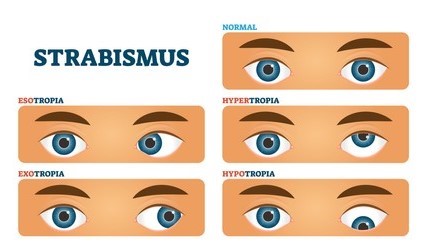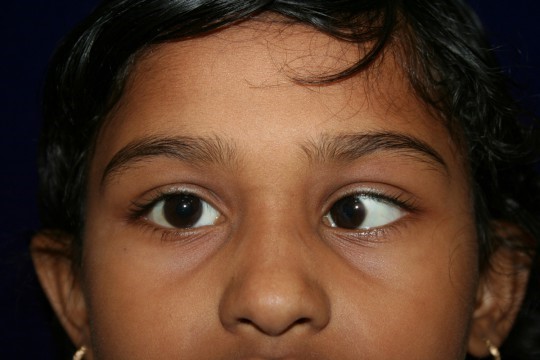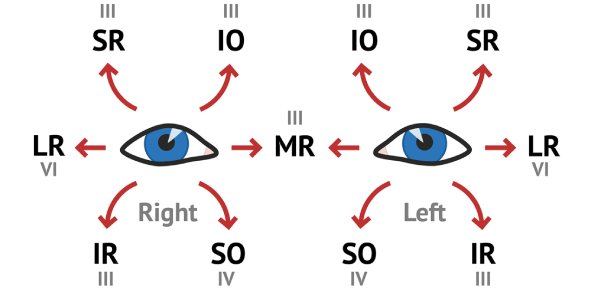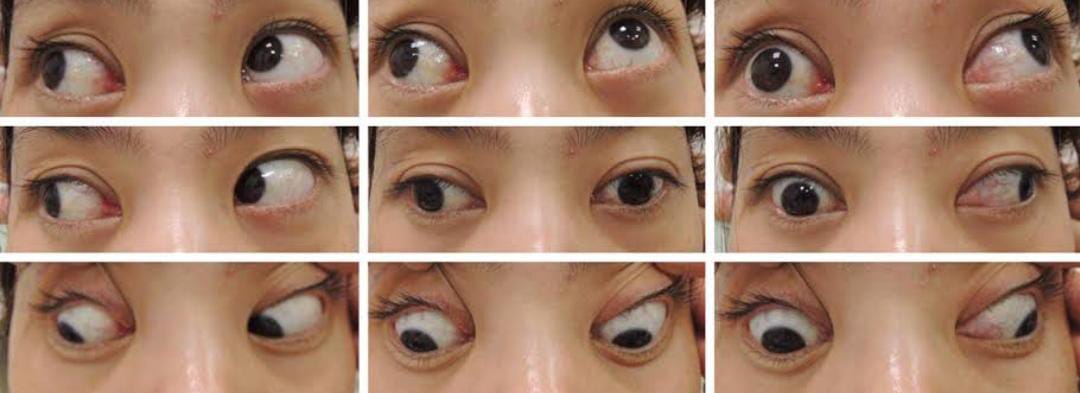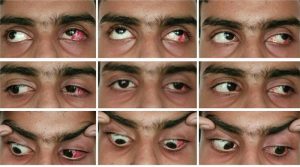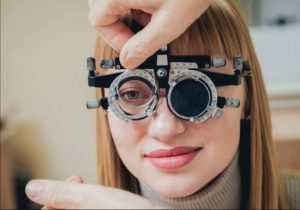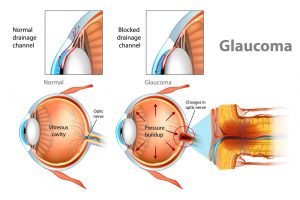Esotropia is the term used to describe any manifest convergent of the visual axes in which the amount of deviation in the squinting eye remains constant in all the directions of gaze and there is no associated limitation of ocular movements.
In general, development of an esodeviation has got three stages:
- Stages of latent esodeviation:
In this stage, the esodeviation is kept latent by the control of fusional divergence reserve. It is also called the stage of esotropia.
- Stage of intermittent esodeviation:
In this stage, the fusional divergence reserves which usually keep the deviation latent, become inadequate internittently resulting in intermittent mainfest esodeviation.
- Stage of constant esodeviation:
When the fusional divergence amplidute becomes inadequte to maintain the latency of deviation, a permanent manifest esodeviation. Constant esotropia may be unilateral esotropia or alternating esotropia.
- Accommodative Esotropia:
Accommodative esotropia refers to esotropia which caused by over convergence in response to accommodation. Therefore, the convergent deviation of the eye varies in degree according to the amount of accommodation exerted.
CHARACTERISTICS:
- Onset age is usually between 2 and 3 years. Most cases occur between 6 months and 7 years of age. However, rarely it may occur as early as 3-4 months of age( infantile esotropia).
- Esodeviation is usually intermittent at onest becoming constant with passage of time.
- Often hereditary
- Precipitated sometimes by trauma or illness.
- Amblyopia is frequently associated.
TYPES:
- Refractive accommodative esotropia (high hyperopia with normal AC/A ratio)
- Non- refractive accommodative esotropia ( high AC/A ratio)
- Hypoaccommodative esotropia.
- Mixed or partially accommodative esotropia.
- REFRACTIVE ACCOMMODATIVE ESOTROPIA:
Refractive accommodative seotropia refers to that types of esotropia which:
- Varies in degree depending on the amount of accommodation exerted.
- Is caused by hypermetropia.
- Wearing of spectacles eliminats the esotropia in all fixation distances and in all gaze positions.
FACTORS IMPLICATED ARE:
- Uncorrected hypermetropia
- Fusional divergence amplitue
- AC/A ratio
- Child’s personality
CLINICAL CHARACTERISTICS:
- Time of onset.
- Hypermetropia
- Ocular deviation
- AC/A ratio is usually normal.
- Associations: Patients with refractive accommodative esotropia may have folllowing associated strabismic abnormalities:
- Vertical deviation
- A-V pattern
TREATMENT:
- Optical correction
- Amblyopia therapy
- Orthoptic treatment
- Surgery
COURSE OF UNTREATED ACCOMMODATIVE ESOTROPIA:
If anti-accommodative therapy is delayed for several weeks to months:
- Some or all of the esodeviation will not respond fully to apporpriated anti-accommodative therapy.
- When hypermetropia is greater than 5.0D, there is a major risk of bilateral ametroois amblyopia.
- NON-REFRACTIVE ACCOMMODATIVE ESOTROPIA[ESOTROPIA WITH HIGH AC/A RATIO]:
It refer to that of accommodative esotropia which is caused by a high AC/A ratio and thus the esotropia is singnificantly greater at near than distance fixation. It is unrelated to refractive error and the near point of accommodation is normal for the age of the patient.
CLINICAL EVALUATION AND DIAGONOSIS:
- Measurment of deviation.
- Cycloplegic refraction.
- Measurment of AC/A ratio.
- Measurment of fusional divergence amplitude.
- Examination of fundus and ocular media.
Dignosis of NEAR is usually based on following observation:
- Near esotropia is typically much greater than the distance esotropia with the refractive error fully corrected.
- Establishment of high AC/A ratio by lens gradiant method in the presence of a normal near point of accommodation.
- Special care and caution is needed in not to confuse a V- pattern esotropia with NREA due to high AC/A ratio.
TREATMENT:
- Amblyopia therapy.
- Bifocal glasses.
- Prerequisites for use of bifocal.
- Orthoptic exercise.
- HYPOACCOMMODATIVE ESOTROPIA:
Hypoaccommodaytive esotropia is the term coined by costenbader for the accommodative esotropia which is associated with weakness of accommodation.
Costenbader hypothesized that to overcome accommodative effort which which in turn result in incresed convergence resulting in near esotriopia.
CLINICAL CHARACTERISTICS:
Hypoaccommodative esotropia is characterized by following feature:
- Esotropia is largefor near fixation and small for distance fixaion.
- Esotropia is not related to uncorrected hypermetropia.
- AC/A ratio is not high.
- Near point of accommodation(NPA) is definitely remote, i.e there is of accommodation.
TREATMENT:
- Bifocal Glases: A near add of plus lenses to compensate for the weak accommodation may be useful.
- Orthoptic Exercises to improve accommodation.
- PARTIALLY ACCOMMODATIVE ESOTROPIA:
DEFINATION:
Partially accommodative or mixed esotropia is the term used to described an esotropia is the partly due to some accommodative factors and partly due to some non-accommodative factor.
TREATMENT:
- Correction of accommodative part of esotropia should be carried out first.
- Amblyopia is usually associated and should be treated before the surgery is undertaken. NON-ACCOMMODATIVE ESOTROPIA:
This group includes all the acquired esodeviation in which the amount of deviation is not affected by the state of accommodation.
These the following clinical entities:
- Infantile accommodative esotropia.
- Nystagmus blockage syndrome.
- Microtrope.
